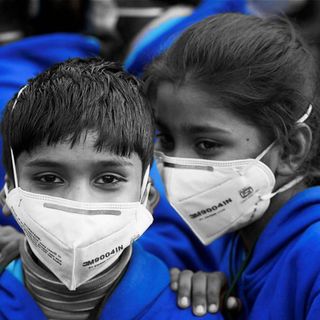
Why We Scream When We’re Scared
Screaming is a unique noise that alerts the brain in a way other noises don’t.

A few nights ago, I came home to an empty house late at night. Walking by the open door to the bathroom, I heard a rustle. So help me Sidney Prescott — I screamed.
It was a draft on the shower curtain.
I’m not a typically skittish person. I like to stay on my toes by imagining Captain America-like situations during my morning ride in the lift, squashed among 20 male office workers. So, why did I scream in fear? (One theory: because I do not actually have Captain America-like abilities.)
Screaming, however, is a unique noise. Research suggests when we scream in fear, the noise serves the dual purpose of sharpening our own focus in the face of a threat as well as of warning others.
In fact, our brains process screams in a unique way. Most noises we hear are delivered from our ear to an area of the brain devoted to analyzing a sound and breaking it into its component parts, such as gender, age, and tone; high or low; a brass, stringed or electric instrument — or several combined; a ribbit or a coo, and what animal makes that sound.
A scream is different though, according to David Poepple, PhD, a professor of psychology and neural science at New York University. Poepple is the lead author of a 2015 study that looked into what happens in the body when people scream in fear. A scream goes straight from the ear to the amygdala, the part of the brain that processes fear and kickstarts the body’s fight-or-flight response. The sound jolts our brains into increased alertness and analysis.
Related on The Swaddle:
What Makes Us Want to Watch Scary Movies?
This is especially true for screams when we’re scared. These have a unique sound signature encompassed by the term “roughness.” Roughness is a measure of a sound’s variation in volume. While human speech tends to be less rough, changing volume at a rate less than 5 hertz per second, a human scream is highly rough, varying in volume at a rate of 30 to 150 hertz per second, reports Sarah C. P. Williams in an article on Poepple’s work for Science. In one component of his study, Poepple had volunteers listen to recordings of screams and rank their scariness. The rougher the scream, the more terrifying participants found it. Functional MRIs of the brains of 16 participants while they listened to a variety of screams found rougher screams more effectively activated the amygdala.
This roughness is what serves to alert others to danger. Humans and other animals scream for many reasons — in joy, in surprise, in fear. But we’ve evolved to be able to produce different shrieks and to be able to discern the difference when we hear them. (Incidentally, roughness is also why we find the sound of a baby crying and fingernails on chalkboards disturbing; both sounds have high roughness.)
But what about people who have the opposite reaction when they’re scared? What about the people who don’t scream in fear, but become speechless in the face of a threat? This has been less studied, but it’s likely a part of the third, overlooked response to terror: paralysis.
Contrary to pop medicine, fight and flight aren’t the only two reactions to something scary. Humans, like other animals, also evolved the option to freeze, or “play dead” in the face of a threat. This happens involuntarily, when the cerebellum, the part of the brain that regulates muscle activity, overpowers other terrified brain responses and basically shuts down all movement. Since screaming takes quite a few muscles (probably a little less than the 100 used for speaking), a person frozen in fear is rendered mute as well as immobile.
There’s no one right way to respond — our reaction is entirely in-the-moment and unconscious. But conscious evaluations of fearful situations may give us clues as to how our bodies respond to a threat. A 2001 study of how human evaluations of threat and reaction behavior compared to actual rat behaviors in lab experiments found humans associated certain reactions more with specific threats. In it, 79 women participants rated the likelihood of reactions — attack, run, freeze, risk assess, scream, and hide — in response to various threat characteristics: dangerousness, inescapability, distance (far), identifiability (not ambiguous), and concealment. Inescapability was ranked the likeliest scenario in which respondents would scream. Incidentally, inescapability was also ranked the likeliest scenario in which respondents said they’d freeze. (Data breakdowns of male participants were not publicly available.)
So there you have it — we’re probably just as likely to scream in fear as we are to go mute in an effort to survive something terrifying. Of course, this study was conducted based on participants consciously considering their course of action from the safety of a non-threatening environment. In real life, terror seldom leaves much room to pause for logic. If it did, no one would scream at shower curtains.
Liesl Goecker is The Swaddle's managing editor.
Related


How Forceps Paved the Way Towards More Medical Intervention in Childbirth
